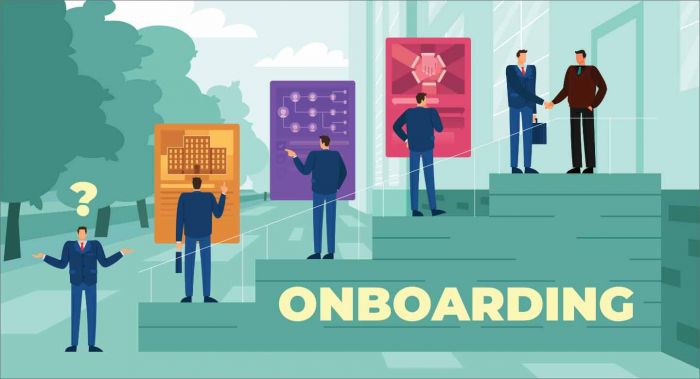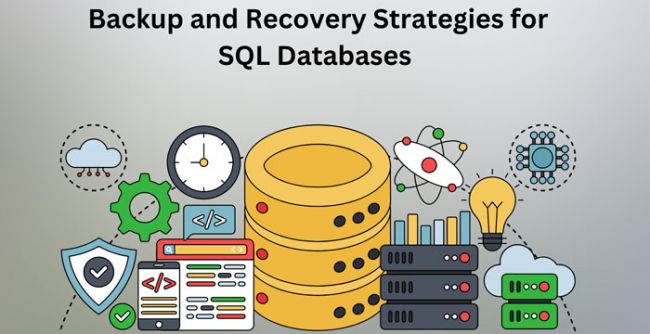Our comprehensive guide invites you to explore employee LMS onboarding: a crucial process for companies embracing remote work and virtual training. The indispensability of a Learning Management System (LMS) in successful new employee integration cannot be overemphasized, as it equips both employers and employees with numerous benefits. This article not only underscores the significance of LMS onboarding but also furnishes detailed instructions to proficiently integrate fresh team members using this system.
What is LMS Onboarding?
The term “LMS onboarding” denotes the systematic integration of new users, usually employees, into an organization's learning management system, this process guides them through understanding and utilizing various functionalities, features, and resources to ensure effective navigation of the platform. This comprehensive procedure often encompasses tasks like account setup, becoming acquainted with course catalogs, comprehending assessment methods, as well as gaining access to support channels.
Why Use LMS for Onboarding Employees?
Using an LMS for employee onboarding yields multiple advantages. Primarily, it alleviates the workload on HR departments, as they no longer require in-person sessions, thus conserving time and resources. Moreover, by providing identical onboarding materials and experiences to their in-office counterparts, it accommodates remote employees effectively. The LMS ensures consistent, standardized information and training for all employees, and it also tracks their progress and performance, providing valuable insights to improve these aspects.
Key Elements of LMS Onboarding

- Understand the Needs of Users: It's crucial to know what both workers and learners look for in the LMS, maybe by doing questionnaires, group discussions, or one-on-one talks.
- Provide Access to Resources and Support: New users, especially if they don't know much about technology, might see the LMS as something very challenging. So, it is really important to make sure they can get support and resources that will help them use the system well.
- Customize the LMS for Your Organization: Customizing the LMS to meet the specific needs and requirements of each organization is crucial. This may involve integrating branding, developing personalized courses, and establishing distinct user roles and permissions.
- Create a Structured Onboarding Plan: The plan ought to incorporate a comprehensive, step-by-step manual for users regarding the utilization of the LMS, available resources at their disposal, and the designated point persons to approach for assistance.
- Communicate and Gather Feedback: Effectively informing and updating users throughout the process is crucial, achieved through distributing routine emails with advice and insights, conducting webinars to address inquiries, and establishing a platform for feedback.
Importance of Choosing the Right LMS for Onboarding
Evaluating LMS Options
Organizations can effectively evaluate various LMS options by strategically considering features, functionality, and pricing structures to ensure alignment with their onboarding objectives and budgetary limitations.
Accessibility and Mobile Compatibility
Selecting an LMS that prioritizes accessibility and is compatible with mobile devices enables organizations to offer instant access to onboarding resources at all times, catering to the needs of remote or geographically dispersed employees and elevating the overall onboarding encounter.
Security and Compliance Considerations
When choosing an LMS for onboarding, emphasizing security components and compliance capabilities guarantees proper safeguarding of sensitive staff data and private company intel. Furthermore, implementing compliance functionalities aids in meeting regulatory mandates and industry norms, reducing legal liabilities associated with onboarding procedures.
Why is Designing Engaging Onboarding Content Important?
Enhanced Employee Engagement
The organization's captivating onboarding material captures the attention and piques the interest of the employees from the very beginning, ultimately cultivating a favorable initial encounter with the company. This involvement establishes a precedent for their continued dedication.
Accelerates Time-to-Productivity
Active and thought-provoking onboarding materials facilitate the swift absorption of information and skills, empowering fresh hires to swiftly integrate into the team. This minimizes their journey towards achieving maximum performance capacity and adds to the overall efficacy of the organization.
Supports Retention and Loyalty
Participating in immersive onboarding encounters enhances sentiments of satisfaction and dedication among fresh employees. When these individuals sense a sense of worth and encouragement throughout their initiation journey, they are inclined to endure with the establishment for an extended duration, minimizing resignation rates and nurturing a climate of loyalty.
Implementing LMS Onboarding
Pilot Testing
Prior to initiating the organization-wide onboarding, running an LMS pilot test with a select group of employees proves crucial. This step allows for the identification of any system flaws or technical issues and offers an opportunity to effect necessary changes prior to the comprehensive rollout.
Rollout Strategy
After successfully pilot-testing the LMS onboarding, strategizing for the rollout becomes our immediate focus. We decide who gains access to this program, plan its introduction methodically, and determine a timeline for widespread implementation.
Feedback Mechanism
Finally, the LMS onboarding program necessitates a feedback mechanism for its success. This may manifest as end-of-onboarding-process surveys or feedback forms; however, it is imperative to collect this input from both new hires and the HR team entrusted with managing said onboarding program. This analysis will shed light on the efficacy of the onboarding process and underscore potential areas for enhancement.
Monitoring and Improving Onboarding Effectiveness
KPIs for Success
Organizations can utilize various onboarding analytics and KPIs to evaluate the efficacy of their onboarding processes, such as employee turnover rates, ability to reach full-time productivity, overall satisfaction amongst employees, and levels of engagement.
Post-onboarding Surveys
It is imperative to conduct these surveys within a few weeks of the employee's start date in order to capture their initial encounters. The survey inquiries include facets such as the efficacy of training, the quality of information disseminated, and the employee's overall satisfaction.
Continuous Improvement
Onboarding is not a one-and-done process. This ongoing activity must continuously evolve and improve. Organizations need to adopt a continuous improvement mindset and regularly review and update their onboarding process. Only then, they can meet the needs of new hires and the organization.
Overcoming Common Challenges in LMS Onboarding

User Resistance
During LMS onboarding, significant hurdles present themselves in the form of user resistance. Factors such as a limited comprehension of the advantages offered by an LMS, apprehension towards change, and hesitancy to embrace new technology amplify this challenge. To overcome this obstacle, one must effectively convey not just the significance but also the worthiness that comes with using an LMS for its users.
Integration with Existing Systems
Perhaps, larger organizations have already established systems for various functions such as HR, payroll, and training, integrating an LMS with these existing structures can pose a daunting, even time-consuming task. Yet through close collaboration with the IT team, seamless integration becomes not just possible but probable.
Technical Issues
Another common hindrance during LMS onboarding encompasses technical challenges: slow loading speeds, system malfunctions, and compatibility issues with various devices. Such hurdles potentially disrupt the smooth operation of the LMS, causing frustration for users as well as administrators. Selecting a reliable and reputable LMS is crucial in overcoming this obstacle.
How to Implement LMS for Employee Onboarding?
- Identify the Learning Objectives: To initiate the implementation of an LMS for employee onboarding, one must first identify the learning objectives with utmost clarity. Such objectives serve as a comprehensive roadmap throughout the entire onboarding process.
- Choose the Right LMS: The market offers a plethora of LMS options, which might be overwhelming when it comes to selecting the most suitable for your organization: ease of use, scalability, and customization options are all factors worth considering before making any decision.
- Develop Engaging Content: Engaging and interactive content drives the success of any LMS. Therefore, to foster an interesting and effective onboarding process: develop videos, create quizzes, and design simulations, in addition to case studies that mimic real-life scenarios.
- Create a Structured Onboarding Schedule: An LMS affords self-paced learning flexibility, potentially a significant benefit for remote employees. Nevertheless, incorporating a structured onboarding schedule, inclusive of milestones, deadlines, and checkpoints, proves crucial.
- Monitor and Evaluate the Onboarding Process: Implement the onboarding process, then vigilantly evaluate its effectiveness: the LMS must offer reporting features, as these will shed light on employee engagement, completion rates, and assessment scores.
Future Trends in LMS Onboarding
AI and Personalization in Onboarding
AI-powered onboarding systems provide a personalized training experience by utilizing employee skills, preferences, and learning styles. This customization enhances the efficiency of onboarding and increases employee engagement and satisfaction.
Adaptation to Remote/ Hybrid Work Trends
The pandemic has accelerated the shift towards remote and hybrid working, and this trend is expected to continue even after the pandemic has subsided. As a result, onboarding procedures for remote staff members are being adopted.
Integration with Collaboration Tools
Integrating LMS platforms with third-party tools like Slack, Microsoft Teams, or Zoom facilitates communication, collaboration, and knowledge sharing between teams. This fosters a strong sense of community and involvement throughout the onboarding process.
Conclusion
In conclusion, both employers and employees derive essential benefits from implementing LMS onboarding. This guide underscores the importance of such integration and offers meticulous instructions for its successful execution. Promising to boost efficiency and engagement in the onboarding process are future trends like AI personalization, adaptation to remote work conditions, and integration with collaboration tools.
Are you prepared to enhance your experience with learning management? Collaborate with Gyrus, a leader in the area known for consistent innovation and delivering satisfaction to customers. Take the next step towards unlocking the full potential of your learning initiatives:
- Learn about our commitment to innovation and customer success at Gyrus About
- Discover advanced features that set us apart at Gyrus Features
- Gain insights into flexible pricing options at Gyrus Pricing
- Experience the future of e-learning by scheduling a personalized demo at Schedule a Demo.
Post Comment
Be the first to post comment!


